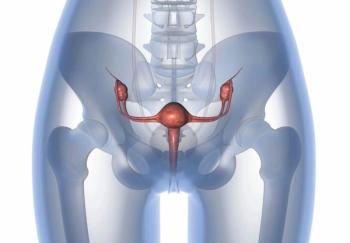
Drug Combo Delayed Progression in Some Metastatic Breast Cancer Patients
Adding the drug dasatinib to standard antihormone therapy letrozole doubled the median progression-free survival of patients with hormone-receptor positive, HER2-negative breast cancer, according to the results of a small phase II study.
Adding the drug dasatinib to standard antihormone therapy letrozole doubled the median progression-free survival of patients with hormone-receptor positive, HER2-negative breast cancer, according to the results of a small phase II study.
Study investigator Dev Paul, DO, PhD, breast oncologist at US Oncology and Rocky Mountain Cancer Centers, Denver, called this outcome promising, but emphasized that researchers will need a biomarker to measure Src, which is involved in breast cancer invasion, proliferation, and survival, and targeted by dasatinib, in order to identify which patients would be most likely to benefit.
Paul presented the results of the study at the 2013 San Antonio Breast Cancer Symposium.
Dasatinib, an oral Src inhibitor, is a US Food and Drug Administration–approved drug for the treatment of chronic myeloid leukemia. Combined tamoxifen and dasatinib has been shown to inhibit the growth of endocrine therapy-resistant breast cancer in vivo.
“Our hypothesis was that combined letrozole plus dasatinib as first-line aromatase inhibitor treatment for metastatic breast cancer would improve clinical benefit rate and progression-free survival, with letrozole as a randomized concurrent control arm,” Paul said.
The noncomparitive, parallel group study included 120 patients stratified by disease-free interval and prior tamoxifen treatment. Patients were randomly assigned letrozole plus dasatinib or letrozole alone. Patients who progressed on letrozole alone were allowed to crossover to combination treatment.
The primary endpoint of clinical benefit rate, measured as the sum of complete responders, partial responders, and patients with stable disease for 6 months or more, was not significantly different between the two treatment groups (71% for combined treatment vs 66% for letrozole alone).
Patients assigned to dasatinib plus letrozole had a median progression-free survival of 20.1 months compared with 9.9 months for treatment with letrozole alone (HR = 0.49). However, Paul pointed out that since this was a phase II, noncomparative, parallel type study, the hazard ratio is exploratory only.
Baseline measurement of bone mineral density indicated that about one-third of patients in both groups began the trial with a T-score of -1.5 or less. At the end of the study, only 14% of patients in the combination arm had a T score of less than 1.5; whereas, no similar reduction was seen in patients assigned letrozole alone. About 30% of patients in each group received bisphosphonates, Paul noted.
Newsletter
Stay up to date on recent advances in the multidisciplinary approach to cancer.



















































































